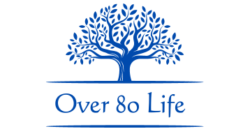Life Insurance for Estate Liquidity

Ensuring a stable and secure financial future for your loved ones after you have passed away requires careful planning and understanding of how certain tools can be used to protect and pass on your legacy. One of the crucial elements in this planning process is considering the use of life insurance to provide estate liquidity. Estate liquidity refers to having enough accessible cash or cash-equivalent assets within an estate to cover various immediate financial needs such as paying off debts, covering estate taxes, and settling estate settlement costs. It prevents the need for your heirs to sell off assets under pressure, often at lower prices, to meet these obligations.
This article aims to extensively cover the concept of using life insurance to ensure your estate has the necessary liquidity, delving into different types of life insurance policies, strategies for enhancing liquidity, and the importance of professional guidance in the estate planning process. It is written with non-native English speakers in mind, to help make complex financial and insurance terms and concepts more understandable.
Different Types of Life Insurance Policies for Estate Liquidity
Choosing the right type of life insurance is crucial in creating a safety net that ensures your estate’s liquidity needs are adequately met. Here’s a detailed look at various options:
| Type of Policy | Description | Best For |
|---|---|---|
| Universal Life Insurance | A type of permanent insurance offering flexible premiums and the potential to accumulate cash value. | Individuals seeking flexibility and a cash value component. |
| Whole Life Insurance | Provides coverage for the insured’s whole life with fixed premiums and a cash value component. | Those looking for stability and lifelong coverage. |
| Term Life Insurance | Offers coverage for a specific period, with no cash value component, but usually lower premiums. | Individuals seeking affordable, temporary coverage. |
| Survivorship Life Insurance | Covers two lives and pays out upon the second death, useful for estate planning. | Couples looking to provide for heirs or pay estate taxes. |
| Indexed Universal Life Insurance | A variant of universal life with cash value linked to a market index. | Those seeking the potential for higher returns on cash value. |
| Variable Life Insurance | Offers investment options for the cash value component, with the potential for higher returns and risks. | Investment-savvy individuals wanting control over investments. |
Using Trusts and Estate Planning Tools
Combining life insurance with estate planning tools such as trusts can provide additional benefits. Here’s how specific tools can assist in the process:
- Irrevocable Life Insurance Trust (ILIT): An ILIT can own your life insurance policy, removing the death benefit from your taxable estate, potentially saving a significant amount in estate taxes and enhancing estate liquidity.
- Special Needs Trust: This type of trust ensures that a child or dependent with special needs can inherit without losing eligibility for government assistance.
- Charitable Remainder Trust: Offers a way to provide for a charity and your heirs, with part of the trust’s assets going to a charitable organization and the remainder to your beneficiaries.
Strategies for Funding and Enhancing Liquidity
To adequately fund your estate’s liquidity needs, consider these strategies:
- Premium Financing: This involves taking a loan to pay your life insurance premiums, useful for preserving capital while maintaining a policy for liquidity.
- Wealth Transfer Insurance: A strategy aimed at efficiently transferring wealth to the next generation with minimized tax impact, utilizing life insurance for its tax advantages.
- Key Person Insurance: Relevant in business contexts, this insurance is on the life of a key individual whose death would significantly impact the business’s financial position, thereby also affecting estate liquidity.
Collaborating with Professionals
Estate planning is a complex process that benefits greatly from professional input. Here are some experts you might work with:
| Professional | Role |
|---|---|
| Financial Advisor | Helps design a comprehensive financial and estate plan, including selecting the appropriate life insurance for estate liquidity needs. |
| Estate Planning Attorney | Provides legal guidance on setting up trusts, drafting wills, and ensuring your estate plan complies with current laws. |
| Tax Advisor | Advises on the tax implications of your estate planning choices, helping to minimize taxes and ensure efficient wealth transfer. |
Conclusion
Implementing life insurance for estate liquidity is a critical part of ensuring that your estate planning goals are met, protecting your legacy, and providing your heirs with a secure financial future. By understanding the different types of policies available and how they can be integrated with estate planning tools, and by working with the right professionals, you can create a robust strategy that meets your and your family’s needs. Remember, the key to successful estate planning is early and thorough preparation; start the conversation with your advisors today to ensure a smoother transition for your loved ones tomorrow.
Frequently Asked Questions
Survivorship Life Insurance, also known as a Second-to-Die Policy, insures two lives, usually spouses, and pays out upon the second’s death, which can help with estate planning or charitable giving. Indexed Universal Life Insurance ties the cash value growth to a stock market index, allowing for potentially higher returns while hedging risk. Variable Life Insurance gives policyholders investment control over the cash value, aiming for higher returns but with higher risk.
Permanent Life Insurance encompasses policies like whole, universal, and variable life, providing lifelong coverage and a cash value component. Wealth Transfer Insurance is intended to help high-net-worth individuals move wealth to the next generation efficiently, mitigating estate taxes. Key Person Insurance protects a business against the financial impacts of losing a crucial employee. Corporate-Owned Life Insurance (COLI) and Bank-Owned Life Insurance (BOLI) are used by businesses for various financial strategies, including benefit funding and business continuity planning. Split Dollar Life Insurance is an arrangement between two parties to share the costs and benefits of a policy, often used in executive compensation. Private Placement Life Insurance (PPLI) offers high-net-worth individuals efficient wealth transfer and tax advantages, within a customizable life insurance framework.
Estate and Estate Liquidity Planning are crucial for understanding liabilities at death, such as taxes and debts, ensuring there’s sufficient liquidity to cover these without the need to hastily sell off assets. Tools like the Charitable Remainder Trust and Special Needs Trust serve specific legacy objectives, such as charitable giving or providing for a disabled beneficiary, without endangering their eligibility for government benefits. Other instruments like the Qualified Personal Residence Trust (QPRT) and the Intentionally Defective Grantor Trust (IDGT) are used to transfer high-value assets out of one’s estate at a reduced tax cost.
Dynastic Planning extends these concepts across multiple generations, safeguarding assets from the eroding effects of taxes and legal judgments far into the future. The Grantor Retained Annuity Trust (GRAT) and Crummey Trust are mechanisms designed to freeze the value of assets or facilitate the tax-efficient transfer of wealth to beneficiaries. The choice between a Revocable Trust and an Irrevocable Trust is also key, determining how much control you wish to maintain over your assets during your lifetime and how assets are protected and transferred after your death.
Business Succession Planning addresses the transition of the business ownership and leadership, ensuring that the business thrives beyond the tenure of its current leaders, while an Estate Planning Attorney can provide crucial advice on how to structure these transitions to minimize taxes and avoid legal issues. These planning elements work in tandem to create a comprehensive approach that not only secures the immediate operational needs of a business but also aligns with the long-term financial and legacy goals of its owners.
A Tax Advisor plays a crucial role in navigating the complexities of tax laws to maximize post-tax returns and minimize tax liabilities, while Estate Freezing techniques aim to lock in the current value of an estate for tax purposes, preventing future taxes on appreciation. Central to tax strategy are concepts like the Gift Tax, Annual Gift Tax Exclusion, and Unified Credit, which govern how much wealth can be transferred without incurring taxes, allowing for strategic gifting to reduce the size of an estate before taxation. Understanding and utilizing these strategies enable individuals and families to structure their financial and estate planning in a manner that preserves wealth and minimizes tax liabilities.
A Liquidity Needs Analysis is essential for understanding the financial needs that a life insurance death benefit must cover, such as debts, family support, or business obligations. Life Insurance Policy Loans represent a way to access cash value in a life insurance policy without needing to sell or surrender the policy, although it’s vital to manage this carefully to avoid eroding the policy’s value. Finally, Life Insurance Underwriting is the process through which insurers evaluate the risk of insuring a client, affecting premium rates and coverage amounts. Proper management of these aspects ensures that life insurance serves its intended purpose effectively, whether for protection, investment, or estate planning.
Navigating the complex world of life insurance and estate planning requires a deep understanding of various financial tools and strategies. Among these, Universal Life Insurance, Whole Life Insurance, and Term Life Insurance stand as foundational options for individuals looking to secure their financial legacy. Each type serves distinct needs, from offering lifelong coverage with a savings component in Whole Life and Universal Life policies to providing a cost-effective solution for temporary needs through Term Life Insurance.
For more sophisticated estate planning, tools like Survivorship Life Insurance, also known as a Second-to-Die Policy, and Indexed Universal Life Insurance, which ties cash value growth to a market index, become relevant. These policies are particularly beneficial for covering estate settlement costs and providing estate tax liquidity. In scenarios where estate taxes are a concern, leveraging life insurance to provide the liquidity for these obligations can be a strategic move, ensuring heirs are not burdened with significant tax liabilities.
The creation of an Irrevocable Life Insurance Trust (ILIT) can further enhance the benefits of life insurance in estate planning. By holding a policy within an ILIT, the death benefit can be excluded from the estate, potentially avoiding estate taxes and offering a more efficient wealth transfer mechanism. This strategy, coupled with the careful use of Annual Gift Tax Exclusions and leveraging the Unified Credit, allows for significant estate and gift tax savings.
For business owners, Key Person Insurance and Buy-Sell Agreements funded with life insurance are critical components of Business Succession Planning. These tools ensure that the business can continue smoothly in the event of the death of a key employee or owner. Similarly, Corporate-Owned Life Insurance (COLI) and Bank-Owned Life Insurance (BOLI) provide businesses with financial strategies to address potential losses and fund employee benefits.
Estate Liquidity Planning involves assessing Liquidity Needs Analysis to ensure that there are sufficient liquid assets to cover estate taxes, debts, and other obligations without the need to hastily liquidate other assets. This planning is essential for preserving the value of the estate and ensuring a smooth transfer to the next generation.
For individuals with more complex financial situations, leveraging tools like Charitable Remainder Trusts, Grantor Retained Annuity Trusts (GRATs), and Qualified Personal Residence Trusts (QPRTs) can offer additional estate freezing and tax-saving opportunities. These strategies can be particularly effective in conjunction with life insurance products, such as Private Placement Life Insurance (PPLI), which offers tax-efficient investment growth within a life insurance wrapper.
Dynastic Planning and the use of Intentionally Defective Grantor Trusts (IDGTs) and Special Needs Trusts further illustrate the depth of planning that can be achieved with the right combination of life insurance and trust structures. These methods ensure that wealth is preserved and transferred according to the grantor’s wishes, potentially spanning multiple generations while addressing specific family needs.
In conclusion, the interplay between various life insurance products and estate planning tools offers a robust framework for achieving financial security and legacy goals. Working with a team of professionals, including Estate Planning Attorneys, Financial Advisors, and Tax Advisors, is crucial in navigating the complexities of these strategies and tailoring a plan that meets individual and family needs. Through careful planning and strategic use of these tools, individuals can secure their financial legacy and ensure the well-being of future generations.



